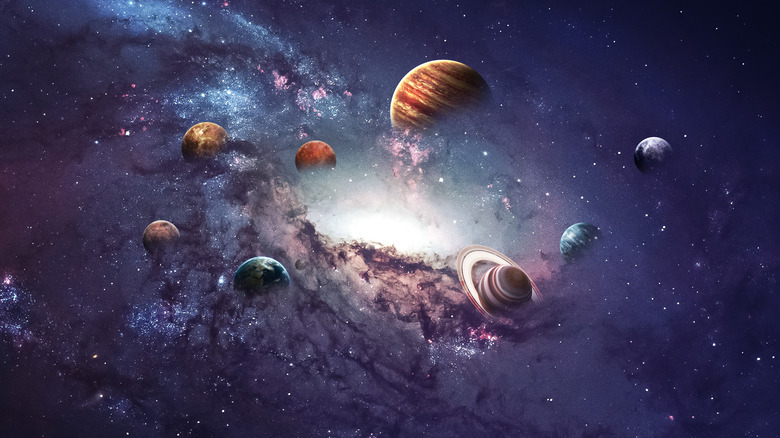Is There A Center Of The Universe?
Unlike a Tootsie Pop, the universe doesn't have a center. At least, that's what we know based on our current understanding of the cosmos.
According to "The Big Bang Theory," the universe exploded into existence from a limitless point with unlimited mass called a singularity. That word might sound familiar after the recent discovery of Sagittarius A* — a black hole found in our galaxy, the Milky Way. The center of a black hole is called a singularity.
However, what we typically get wrong with regard to the Big Bang is visualizing it as a typical explosion that starts from a single point, like a bomb. This gigantic celestial explosion was something different in that the very fabric of space and time started expanding, and with it ... the entirety of the universe. And it all grew at the same exponential rate away from every other thing, simultaneously.
It's a complicated concept that can best be visualized using the now famous "balloon analogy," first put forth by English astronomer Arthur Eddington in his 1933 book, "The Expanding Universe." In simplest terms, if you draw a bunch of dots on the surface of a balloon and blow it up, those dots move away from each other in the same manner as galaxies do in the universe. Keep in mind that galaxies don't expand, because they are bound by the laws of gravity within their respective galaxies.
Even Sherlock Holmes couldn't find the center of the universe
When peering into space through a telescope, everything seems to look the same no matter what direction we point that telescope (via Forbes). According to the American Astronomical Society, galaxies seen from Earth appear to be scattered evenly, indicating no real "preferred" direction or even a center to the universe. This perfectly describes the "Cosmological Principle" that says the universe is both homogeneous (no "special place") and isotropic (no "special direction").
However, the "observable universe" is something a bit different. It is defined as the area of space we can see from Earth — our specific point of view. It is the light from all celestial objects that has been traveling through space since the Big Bang event some 13.8 billion years ago.
Sound uses higher or lower wavelengths, pitches, to tell us if it's getting closer or farther away (like a siren from an ambulance). Light does something similar but uses colors to tell us that same information. According to Forbes, longer wavelengths equate to lower frequencies and lower energies, visible as the color red. Shorter wavelengths, in turn, are associated with higher frequencies and energies and can be seen as blue. So objects throwing off blue light can be assumed to be closer to Earth than red objects.
Our observable universe is based solely on our particular point of view. Looking into space from a planet millions of light years away would give us a vastly different observable universe, because our entire frame of reference would change. Despite how self-important man likes to think of themselves, the Earth is not the center of the universe because the universe has no center.

